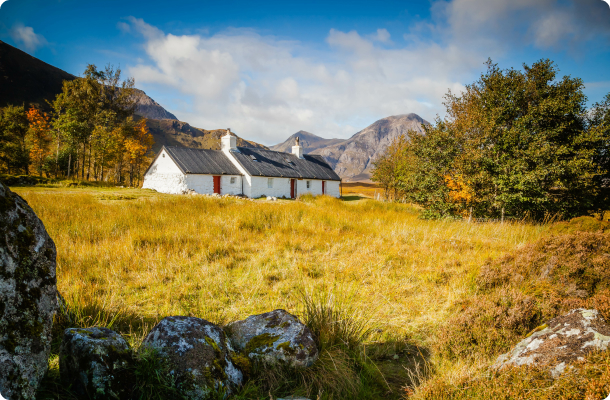Table of Contents
ToggleAre you ready to take a deep dive into the world of whisky tasting in Scotland? With its long history and abundance of flavours, whisky is the perfect drink for a first-time taster. Whether you’re a total beginner or have a little bit of prior knowledge, this guide will give you the taste-buds tingling and the confidence to become an expert whisky connoisseur!
Introduction to Whisky Tasting in Scotland
Scotland has a longstanding tradition of distilling her own whisky, an ancient craft that has been practiced for centuries. Whether you’re a whisky lover or new to the spirit, if you’re looking to learn more about Scotland’s whisky culture then sampling the country’s famed single malts is an unforgettable experience. The time-honored traditions of Scotch whisky tasting make your journey through Scotland even richer and more enjoyable.
To get started, it’s important to understand the basics of whisky tasting. What you look for when trying a dram, or small pour of Scotch, can vary depending on the individual or type of spirit you are tasting but there are some general guidelines that work for any kind. Your nose and palette should be prepared not only by taking in basic information about the whiskies but also by becoming acquainted with how specific smells and tastes will affect your experience.
When properly preparing your palette for the experience ahead, it is important to be aware of how various aromas will affect your taste—from grassy notes to sweet flavours found in sherry casks. Though each distillery may have its own unique flavour profile for its whiskey—much like wine roasts—there is still a universal language surrounding notes of smell and taste which can help guide you through your exploration. Additionally, completing research on different types of whiskies before beginning will help when assessing each type or blend you sample; paying attention to age statements, cask strength whiskey varieties too!
In today’s world there is no one right way scotch should be tasted as opinions on flavours tend to be subjective — some lovers prefer peat-heavy Islay malts while others favour light Speyside whiskies — making everyone’s journey through Scotland just as unique and special as their personalities! Learning what to look out for when exploring Scotland’s selection can make all difference in creating favourite memories associated with each dram that bring back fond feelings for many years come!
Different Types of Scottish Whiskies
When enjoying the rich Scotch whisky traditions of Scotland, it’s important to understand the different types and varieties of whiskies available. Whether its a blended or single malt, selecting the right whisky is paramount to any good tasting experience.
Broadly speaking, Scotch whiskies may be broken down into two major categories: single malt whiskies and blended whiskies. Single malt whiskies are produced by only one type of grain and are purer in their flavour profiles than their blended counterparts – making them very popular in Scotland and abroad. Blended Scotch whisky on the other hand uses at least one single malt whisky (though commonly more) mixed with an unspecified variety of grain whisky to create a unique flavour combination.
When considering which Scotch whisky to choose from, it’s helpful to know that each region in Scotland is defined by its own distinctive tastes and traditions – with distilleries almost exclusively producing for their respective regions only. The five major regions producing most of the country’s whiskies are as follows: Campbeltown; Islay; Highlands; Lowlands and Speyside; each providing vastly different taste experiences for all to enjoy. From powerful varieties such as those from Islay with intense peaty flavours, mellow notes from Speyside or low-key yet fruity options from the Lowlands – there is something for everyone.
Whether you’re a beginner looking for guidance or an experienced drinker that knows just what they like, there’s no need to fear as Scots are incredibly proud of their national drink! So why not use this guide explore around your local pub in Glasgow or head up north for a scenic tour through some of Scotland’s oldest distilleries? Cheers!
The Art of Whisky Tasting: Techniques and Tips
Whisky tasting is an art that can be enjoyed by both novice and experienced tasters alike. Whether you’re in the mood to drink or just want to appreciate the full sensory experience, understanding and mastering the techniques of whisky tasting can help you do just that.
Tasting whisky may appear complicated and require special skills, but in reality it’s all about familiarizing yourself with the characteristics of different whiskies, just like a sommelier would do with wine. To truly experience whisky in all its complexity, there are a number of techniques that are worth trying out.
The first step to tasting whisky is evaluating its aroma or “nose”. The nose is referred to as a “first impression” of a whisky since it provides context and helps you form an early opinion on its aromas. Whisky aromas can be described as chocolatey, fruity, flowery (with notes of roses or violets), smoky, woody (cedar wood), grassy (hay) – of course this will depend on the type of cask used for aging and type of grains used for production! When nosing your whisky make sure to swirl your glass gently before holding it close your nose for about 15 seconds so that the aromas can travel through your sinuses before tasting.
Tasting is an equally important process when enjoying a whisky from start to finish. First assess its taste on your palate– which includes body, sweetness and intensity– then note any flavours perceived on your tongue such as oakiness or any other fruitiness like red apples or dried fruits like dates or figs – again depending on what type of aging it was exposed to after distillation. Your tongue can also pick up tannins or sharpness based on alcohol content (known as cask strength). Finally take in some air after swallowing so senses open up more for deeper flavours such as smokiness from peated whiskies or spices from whiskies finished in bourbon casks.
So next time you open up bottle let these tips serve as guidance towards exploring many delicious possibilities in the world of whisky!
Popular Whisky Distilleries to Visit in Scotland
Scotland has an abundance of whisky distilleries, with many world-famous brands being produced in the country each year. With so many options to choose from, it can be tricky to narrow down the best distilleries to visit when embarking on a whisky tasting tour of Scotland.
When first starting out, it is highly recommended that you focus on 3 major whisky-producing regions: Speyside, Islay and Highland. Each of these regions offers a unique taste and feel in their whiskies and are popular for whisky tours.
- Speyside Whisky Distillery Tours
- Speyside is home to over half of Scotland’s malt whisky distilleries and produces some of the most iconic brands in the world such as The Macallan, Glenfiddich and Glenlivet. A trip to Speyside will take you through some beautiful scenery in Cairngorms National Park as well as whisk you through fascinating histories at each distillery visited. Popular tours include trips to Aberlour, Tomintoul or Blair Athol distilleries.
- Islay Whisky Distillery Tours
- Located off the west coast of Scotland, Islay contains 8 active whisky distilleries that produce some seriously peaty whiskies with a distinctively smoky flavor profile derived from drying barley over burning peat moss fires. Tours such as Ardbeg or Kilchoman offer an unparalleled experience compared to its counterparts on mainland Scotland for those who want a truly immersive island adventure!
- Highlands Whisky Distillery Tours
- The rugged landscapes of Scottish Highlands are home to several breathtaking single malt scotches ranging from Dalwhinnie’s light floral notes right up to Oban Bay’s classic smoky finish. Popular destinations here include The Dalmore near Inverness as well as Tomatin near Aviemore where guests can explore warehouses filled with aging casks while discovering each stage of production during their tour something that any whisky enthusiast will love!
Whisky Tasting Etiquette and Customs in Scotland
Scotland is the home of whisky – and its national drink. As such, there are many etiquette rules and traditions associated with whisky tasting in Scotland. Whisky culture is filled with history, heritage, and rituals that must be followed if one is to truly understand and appreciate whisky in the way it was intended.
Whether you’re an experienced taster or just starting out on your journey of exploration, understanding these customs will help you to have a more meaningful tasting experience.
- Serving whisky correctly is an important part of the ritual – use a tulip-shaped glass, fill it halfway to allow for swirling, use lots of ice cubes but never dilute with water unless instructed by your host! Share samples of different styles or types for comparison or mix classic cocktails if the occasion warrants it.
- When dining in Scotland and serving a glass (or two!) alongside your meal, always make sure that the chosen whisky pairs well with the food you’re consuming – this can be tricky as smokier malts are better suited to seafood dishes whilst lighter malts complement richer dishes such as game or pork far better.
- It’s also polite to offer everyone present at least one dram before pouring yourself another so that everyone can join in the appreciation of similar tastes – this custom dates back centuries! The Scotch Whisky Association states ‘one must always turn away from their company before partaking in another dram’. As Scots consider sharing assistance – not generosity – imbibers should raise a glass after consumed each sip with the words “Sláinte” which translates as “Good Health ”to signify appreciation and respect for those who produce such fine whisky!





